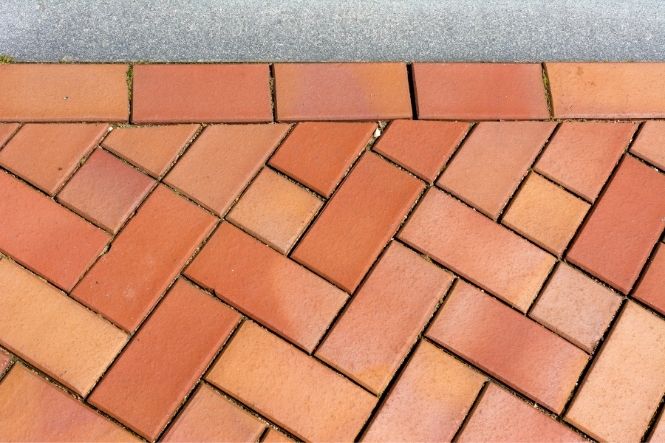Edging is important for a long-lived drive. If this isn’t done right it can lead to cracking, distortion and broken blocks at the extremities of the driveway. A course or two of edge blocks doesn’t just give the drive a professional finish, it also has to contain the sideways pressure as the weight of a car bears down on the drive.
Without an edge course the drive would also have blocks that have been cut to fit the pattern at the borders, and those would disintegrate quickly once the drive comes into use. The blocks at the edge can also be angled to form drain channels, taking away rain water that would otherwise collect in pools and cause the surface to deteriorate.
Pick your Border
The edge course can be made of the same blocks as the rest of the drive, or a contrasting type or colour. Beware of laying too many different runs at the border; you can get away with this on a large, wide space, but on an ordinary short household driveway it’s likely to look too fussy. There’s no limit to the types and colours available, so take a look around and pick something that will look good with your drive, house and garden.
It’s usually best to lay the edge course before Laying The Rest Of The Drive. They can then act as a guide for cutting the blocks at the sides and as a level. If you’re only using one type of block throughout, consider turning the edge course through 90 degrees to contrast with the main body of the drive.
How to Mount the Edge Course for a Lasting Finish
The edge course should be mounted on a bed of at least 10cm concrete, ideally with a 8cm or more wide haunch on the outside (i.e. raised concrete on the outer edge to hold the edge block in place). The haunch should rise up just short of the level of the edge course to allow for grass or whatever dressing is to be placed next to the drive.
This assumes that the body of the drive is to be laid on a floating bed, using sand rather than concrete, for example. That bedding can then easily be levelled using a straight edge laid across the two edge courses.
If the edge course is laid on the same bedding as the drive and simply held in place with concrete haunching added on top of that bed, the edge course is likely to spread out and break away from the drive once it’s been used a few times. This is also contrary to the relevant British Standard, although it’s not uncommon.
Use it as a Guide
Once the main part of the drive has been laid with the whole bricks, the edge course can be used as a guide to cut the bricks that fit in between the whole bricks and the edge. Lay the brick to be cut immediately above the edge, parallel, allowing for a 3mm gap all round, and scribe a line following the side of the edge course. The cut brick should then be exactly the right fit to bridge that gap.


